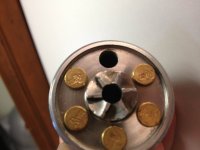Joewisc
US Veteran
Someone please settle this ongoing debate: whether it's OK to dry fire a .22 or any other rimfire handgun or rifle. I bought a new Ruger 10/22, which I dryfired a few times in the store before taking it home. The trigger mechanism was FUBARed before I had a chance to fire one round. Took it back to the LGS, who insisted it was because I dryfired it. He then took it apart and blamed a "popped" spring for the malfunction.
I then spoke to a veteran gunsmith who has worked on Ruger 10/22's and others who told me it was perfectly OK to dry-fire them. Told the LGS owner and he disagreed.
I also have a S&W 617 10-shot, which I don't dryfire because I've seen evidence that it can damage the cylinder. Being a revolver maybe apples and oranges with the 10/22.
Anyway, if someone can clear this up I'd appreciate it.
I then spoke to a veteran gunsmith who has worked on Ruger 10/22's and others who told me it was perfectly OK to dry-fire them. Told the LGS owner and he disagreed.
I also have a S&W 617 10-shot, which I don't dryfire because I've seen evidence that it can damage the cylinder. Being a revolver maybe apples and oranges with the 10/22.
Anyway, if someone can clear this up I'd appreciate it.

